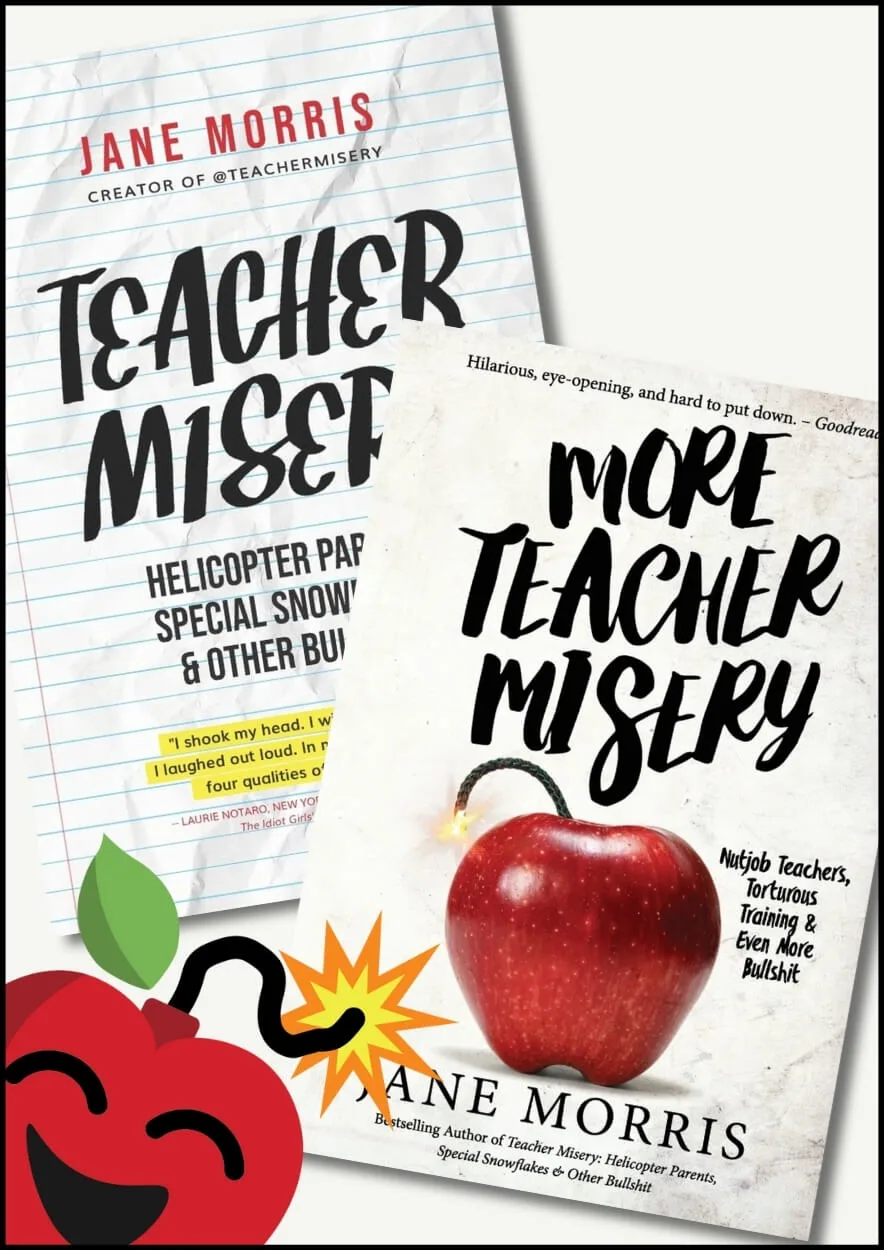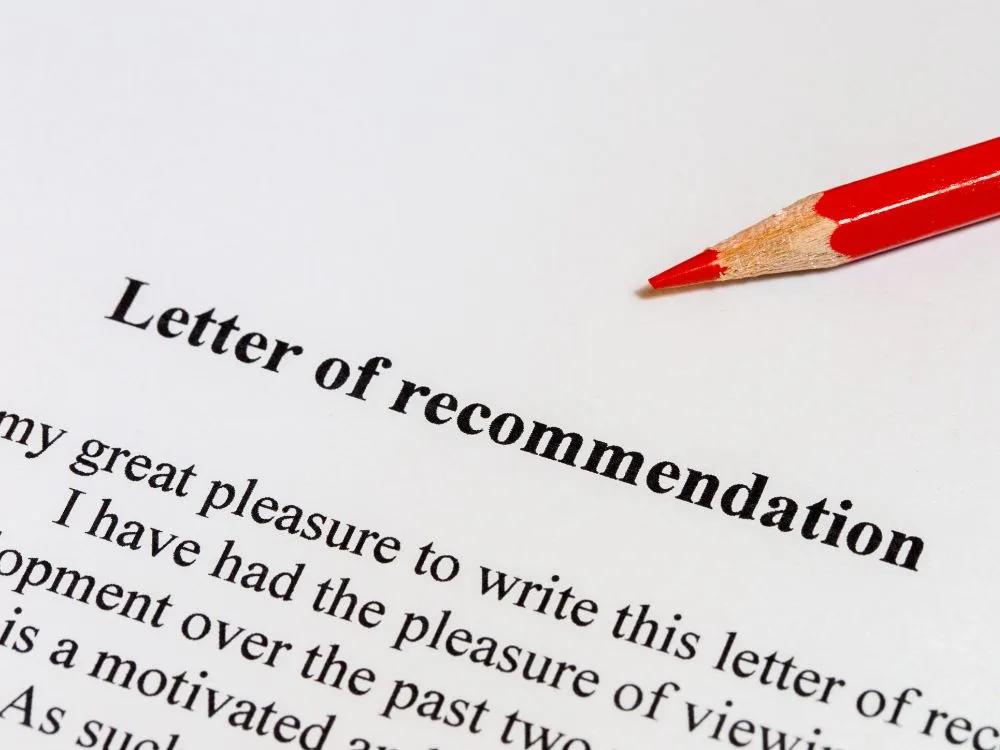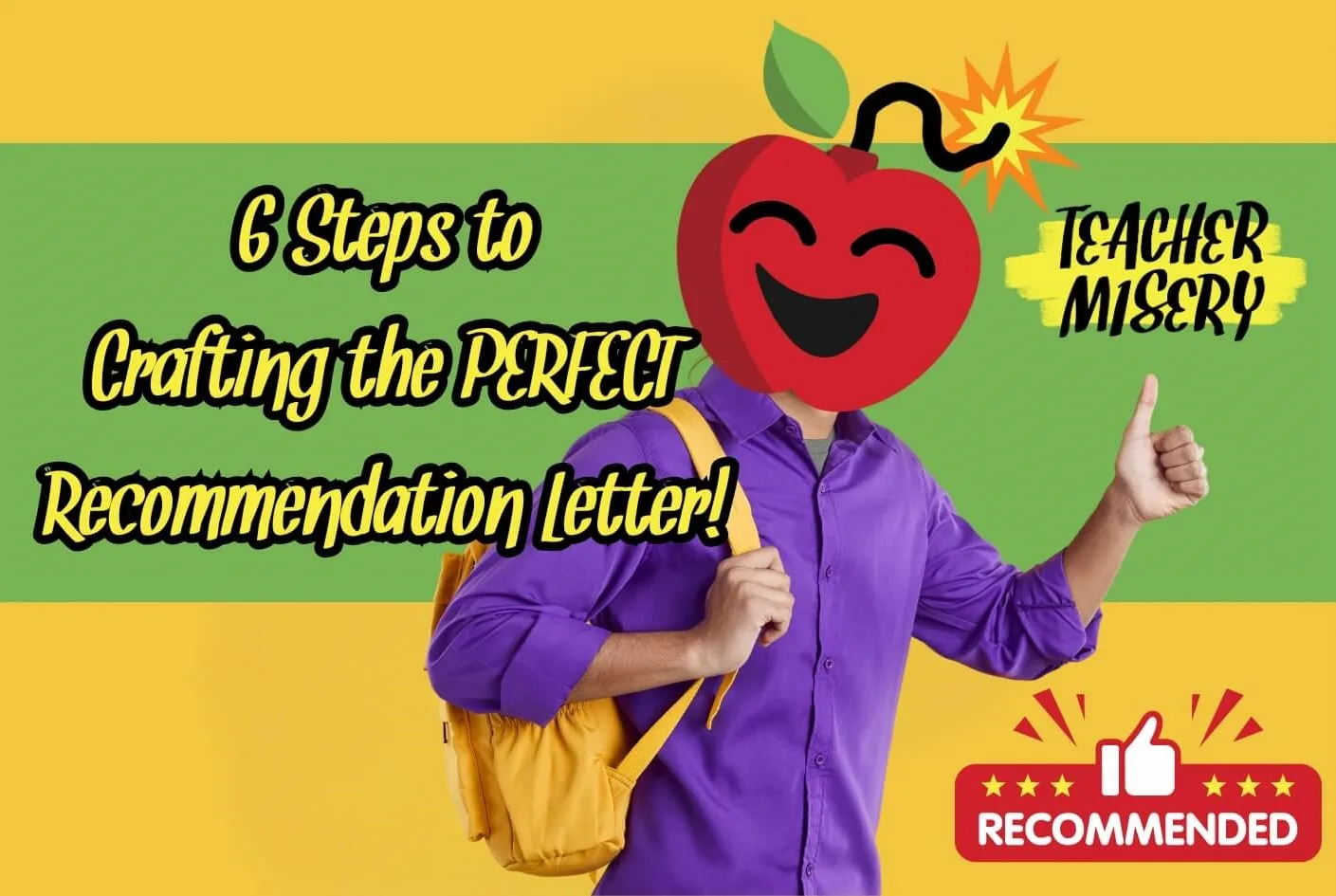A teacher recommendation letter holds considerable weight, serving as a testament to a student’s character, academic abilities, and potential for success. Whether for college applications, scholarships, or employment opportunities, a well-crafted recommendation letter can make all the difference in helping students stand out from the crowd.
However, it can also be a completely overwhelming task when dozens or even hundreds of students ask you for one of these letters simultaneously (likely in the fall). But practice makes perfect… And so does a step-by-step guide!
This guide will explore the essential steps for writing an effective teacher recommendation letter for a student. EVEN if the student wasn’t the best academically but was still a great kid. There is an art to it, so let’s don our cute painter’s caps, grab our quills, and get to work!
This is how to write a teacher recommendation letter, done right and easy.

6 Steps to Writing a Teacher Recommendation Letter for Students
In many ways, writing a recommendation letter for students isn’t much different from writing a resignation letter. The output is very different – and you DEFINITELY want to avoid trauma dumping even more than when quitting – but the steps aren’t so different.
There’s a prep phase, a killer intro, a gentle body, and then you finish off with an ending that leaves a mark.
Always wow them with the ending ;)
Get the Books That Started It All
Before the blog, the podcast, the merch store… there were the best-selling books.
If you like the content on this site, then you’ll LOVE the Teacher Misery books. They’re jam-packed with teaching insanity, ridiculous true stories, and all the commiseration about the profession you’ve come to know, adore, and respect.
Follow the links below to get your copies today!

Step 1: Gather Information
One way to weed out some of the students who asked for a recommendation letter is to make them do a little work first. Have a questionnaire for them to fill out with a specific due date.
You’ve likely already got access to the student’s report cards and various comments from their teachers about their educational aptitude, so you can speak to their academic ability, writing skills, and demeanor. However, having more information about them, such as their hobbies, will help you beef up the letter…
And if they don’t submit the questionnaire by the deadline, that’s less work for you!
Here are some questions for the questionnaire to help you:
- What adjectives would you use to describe yourself?
- What do you consider your academic strengths and weaknesses to be?
- What has been your most significant academic accomplishment?
- What has been your most rewarding academic experience and why?
- What extracurricular activities do you participate in? Which is your favorite and why?
- Describe what you do when you are not in school—do you work? Do you have an internship? Have you learned anything from these experiences?
- What do you want to study in college, and what are your career goals?
- What is exciting or important about you that I do not already know?
- Do your academics accurately reflect your ability? Were there any obstacles, events, or hardships that may have affected you in high school?
- What colleges are you considering and is there a specific reason for those choices?
- Please feel free to tell me anything else that describes the “real you”.
Now that you have gathered relevant information about the student, including their academic achievements, extracurricular involvement, leadership qualities, and personal attributes, this information will serve as the foundation for the letter. This info is crucial for the student’s recommendation letter because it allows you to provide specific examples and anecdotes that illustrate the student’s strengths and character.
Step 2: Writing the Introduction
Now let’s look at how to write a teacher recommendation letter’s intro.
First, ensure you are writing the letter on official school letterhead. If you’re teaching at a new school or just don’t know where to find the school’s letterhead, ask a colleague.
If you no longer work for a school, create an official-looking letterhead with your own information. Next, briefly introduce yourself and your relationship with the student. Then, say what kind of impact the student had on you and your class, if any.

Here are some examples:
- Bob is an excellent student I had in my 11th-grade English class.
- Bob proved to be a great success within the scope of my Honors English class in eleventh grade, and I know he will do the same at your university. Bob’s intelligence, dedication, and kind nature will make him a valuable asset to your school.
- I had Bob in my 11th-grade English class, and he was one of my top students. Bob is a remarkable young man with real ability and potential. His motivation to rise above his difficult familial circumstances is genuinely remarkable. Despite these struggles, Bob has maintained a mature and positive outlook on life and kept academic achievement a top priority.
- I highly recommend Bob to your institution. His warmth of personality, intellect, motivation, and maturity made him a model for other students to emulate in my Honors English 11 class.
- Bob’s intelligence and dedication made him an asset in my 11th-grade English class and will surely make him a valuable asset to your school as well.
- When I had Bob in eleventh grade Honors English, I was impressed by his intellectual curiosity and motivation.
- Bob is one of the most memorable students I have had this year.
- Bob is one of the most memorable students of my career.
Step 3: The Body of the Letter
Next comes writing the body of the student’s recommendation letter.
The body paragraphs provide specific examples and anecdotes highlighting the student’s skills, accomplishments, and character traits. In essence, the qualities of a good student worth highlighting aren’t much different from the qualities of a good teacher.
Here are some examples of aspects you can comment on:
- Intellectual curiosity
- Intellectual creativity
- Academic motivation (do they mainly value the grade, or do they intrinsically seek full understanding and mastery of the subject matter?)
- Academic promise
- Leadership and involvement
- Sense of responsibility
- Initiates and consistently participates in meaningful class discussions
- Warmth of personality
- Sense of humor
- Concern for others
- Energy
- Maturity
- Open-mindedness
- Self-confidence
- Reaction to setbacks
- Faculty view of the student
- Attitude towards learning
- Critical thinking
- Readily synthesizes information
- Work ethic
- How they handle adversity
Step 4: Conclusion
Finally, to conclude a teacher’s recommendation letter, reiterate your endorsement of the student and offer to provide further assistance if needed. Advocate for the student, sing their praises one last time, and sign off!

Here are a few examples of ways to close out your letter:
- I recommend Bob without hesitation, and I truly feel that any institution that receives him is extremely fortunate. Should you have any questions, please feel free to contact me.
- Not only will Bob make an incredible college student, but he is sure to excel at whatever he does. I urge you to accept him without hesitation.
- Bob is an open-minded and confident young man who will make only positive contributions to any academic setting.
Step 5: Proofread and Edit
Before finalizing your recommendation letter for the student, proofread and edit it to ensure clarity, coherence, and accuracy. Check for spelling and grammar errors, and ensure that the content flows smoothly from one section to the next.
If the student is particularly special, consider seeking feedback from colleagues to ensure that your letter effectively conveys your endorsement of the student. (Of course, you can’t do that for all of them because who has time for that?)
Step 6: Submit with Confidence
Once you’re satisfied with the final draft of your recommendation letter, submit it with confidence, knowing that you’ve provided valuable insights into the student’s abilities and character. Also, be sure to follow any specific instructions provided by the recipient regarding submission deadlines and formatting requirements.
Bureaucrats love proper formatting, so be sure to get that one right!
Buy Some Merch · Support the Site!
Teacher Misery is by the teachers and for the teachers. Our mission to improve the lives of teachers everywhere.
If you’d like to support the cause, buy yourself (or the burnt-out educator in your life) a gift from our merch store. And, YES, they are all as sarcastic as you’d hope. 😉
Every dollar supports the commiseration!

How to Write a Teacher Recommendation Letter: Signing Off!
Writing a teacher recommendation letter requires careful planning, attention to detail, and a deep understanding of the student’s strengths and accomplishments.
It can be an overwhelming task, especially if you have to write 50 of them. But by following the steps outlined in this guide, you can create a compelling document that showcases the student’s potential and enhances their chances of success in their academic and professional pursuits.
If you’re having any trouble, there are libraries of templates for student recommendation letters you can utilize to guide you along. (And help the process of writing in bulk!)
Overall, just remember you’re doing a nice thing. Teaching has become so much busy work and learning metrics that sometimes it can be hard to remember that it’s us impacting the future of these kids’ lives.
And if by writing a teacher recommendation letter for a student, you secure them that college selection. Well… You’ve well and truly gone above and beyond your calling.


